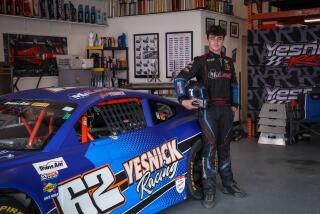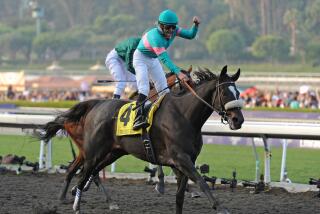Suzuki Hayabusa is about speed, and then some
Faster than a fighter pilot. Smoother than a sake bomb. It’s the 2008 Suzuki Hayabusa -- completely overhauled for the first time since it raced out of the gate and flattened the competition.
When Suzuki first wheeled out the Hayabusa in 1999, the goal was simple: blow away every sport bike on the planet with the fastest production motorcycle ever built, which it did. For the Hayabusa’s 2008 redesign, that goal has been slightly retooled: blow away Kawasaki’s ZX-14 and do it with a ride that’s user-friendly, a slightly more difficult task.
The new 1,340-cc Hayabusa claims 194 horsepower at the crank. That’s almost dead even with the 193 horsepower Kawasaki claims for its 1,352-cc hyperbike, the ZX-14. Both are snot-nosed fast, so consider the competition ended, as far as speed is concerned.
“Fastest production motorcycle” has sort of lost its meaning anyway. A gentleman’s agreement among manufacturers prevents them from building bikes that exceed 186 mph. In the case of the new Hayabusa, it isn’t the bike’s capabilities but an electronic limiter that will stop riders from joining the 200-mph club.
Suffice to say, the 2008 Hayabusa is the fastest bike Suzuki has ever built. The product of several years’ R&D plus an extra kick in the pants from Kawasaki, the new Hayabusa incorporates so many minuscule upgrades, you’d need a magnifying glass and a thick notebook to take stock.
Suzuki was able to add 41 cc of displacement to its new Hayabusa by increasing the stroke on each of its four pistons by 2 millimeters apiece. That’s a 3% displacement increase over the old Hayabusa, so why does the new version crank 12% more horsepower?
Gear heads whose minds turn on machined parts and motor oil might say it’s the modified piston crowns (which upped the compression ratio), the shot-peened connecting rods (which helped accommodate the longer stroke) or titanium valves and lightened valve springs that make the new Hayabusa explode into action like a rocket-propelled grenade. But the biggest gains came from updating the engine management system and fuel injection to the type used on Suzuki’s GSX-Rs.
The 32-bit microprocessor is twice as fast as the old one. The advanced digital fuel injection system is also more efficient. It uses two butterfly throttle valves and two 44-mm throttle bodies, instead of one apiece, while the number of holes in each injector has been tripled, from four to 12, for a finer spray of fuel and a bigger bang of power. Whatever’s left over from that explosion heads out the back through a maze-like 4-into-2-into-1-into-2 catalyzed exhaust.
The Hayabusa is that rare breed of bike that’s broken through the motorcycling miasma from fan boy to regular Joe. Stop an average man on the street and ask him what a Hayabusa is, and he’ll answer like a caveman: Motorcycle. Fast. Dangerous. The Hayabusa is synonymous with speed and excess, so improvements to its engine were expected.
But the Hayabusa was also sent back to the wind tunnel for ergonomic tweaks. The fairing is slightly wider to cover riders’ bodies more fully as they slice through the wind attempting to break the sound barrier. The turn signals have been moved below “the hump,” instead of hanging below the Hayabusa’s telling tail, as they had been on the old version. The windscreen is also taller and its upper lip curved so the wind flows above and around a rider’s helmet instead of turning him into a bobblehead.
With his head tucked for laminar flow, a rider’s better able to check out the five intertwined circles that form the redesigned dash. The gear indicator’s new. So’s the Suzuki Drive Mode Selector, which debuted on the 2008 GSX-R1000. For those who’ve missed the hype: The S-DMS allows riders to choose between three power delivery settings -- which are varying degrees of fast.
Which is what the Hayabusa is all about.
More to Read
Start your day right
Sign up for Essential California for news, features and recommendations from the L.A. Times and beyond in your inbox six days a week.
You may occasionally receive promotional content from the Los Angeles Times.






